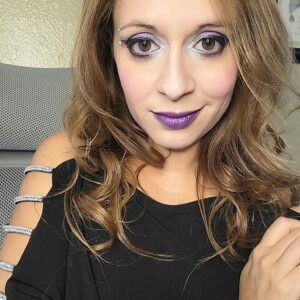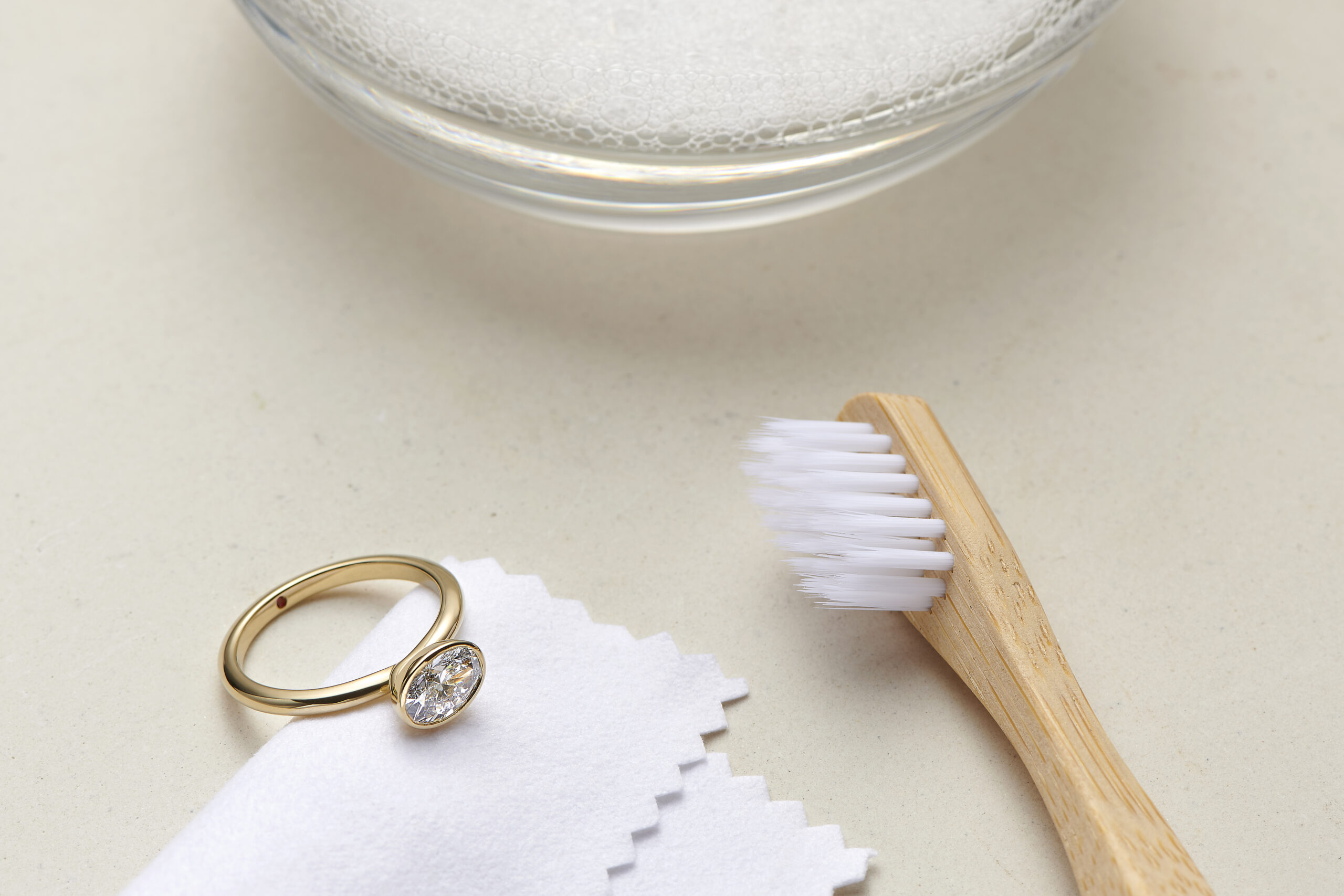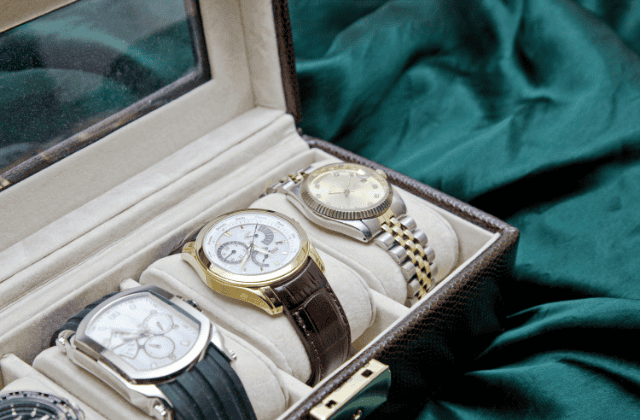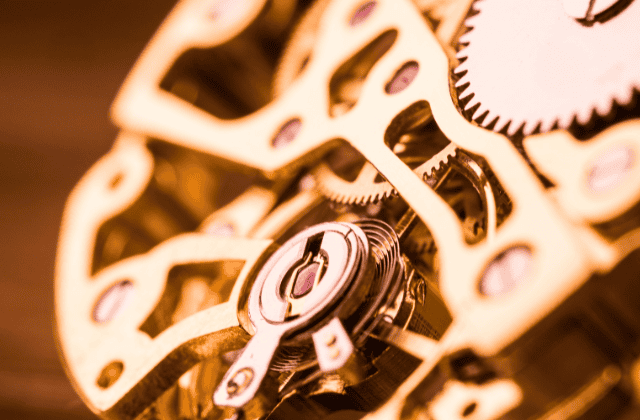Wondering all about lab created blue diamonds?
Perfect, you’re in the right place!
In this Learning Guide, I’ll answer the following:

- How are lab-grown blue diamonds made?
- Are lab- grown blue diamonds more expensive?
- Who sells the best lab-grown blue diamonds?
How Are Lab Created Blue Diamonds Made?
A lab-created blue diamond starts out the way natural blue diamonds are made. A natural fancy colored diamond forms when an impurity enters a diamond crystal as its forming.
It’s very rare for a diamond to be formed without some sort of impurity entering it.
That’s why most diamonds will have a yellow or brown tint. For a fancy colored blue diamond to form, the impurity boron must be introduced. Not only that, but the diamond lattice structure must be flawed.
The flawed lattice allows the boron to seep into creating deep blue colors. True blue diamonds are extremely rare because they often contain other impurities. The element boron only exists in .001% of the earth’s crust.
This is why blue diamonds are among the rarest of fancy colored diamonds.
Scientists can control quality factors of lab-grown blue diamonds easier within the chamber. They are created the same way as mined diamonds.
Instead of hoping the boron will come into contact with the diamond, scientists manually introduce it to the crystal.
Quality Factors of Lab Created Blue Diamonds
All diamonds follow the 4Cs of diamond quality put forth by the Gemological Institute of America: Cut, Clarity, Color, and Carat.
Cut and Clarity
Unlike colorless diamonds, the cut of a lab-created blue diamond isn’t the most important quality factor when buying the best diamond. It’s still important to the overall durability of the diamond, but the brilliance of a fancy colored diamond isn’t a big focus.
You might have heard that an ideal cut round diamond is the best quality of diamond you can get. That’s true. They reflect the most white light with perfect proportions.
Well, a blue diamond doesn’t need white light. A round cut blue diamond is actually the worst shape to get. If you’re buying a fancy colored diamond, you shouldn’t buy a round cut diamond.
You want a diamond shape with a large face-up view, like an emerald cut, radiant cut, or oval cut diamond. That’s if you’re choosing a solitaire. For halo settings, any shape will do (including round) because it doesn’t stick out surrounded by other smaller diamonds.
Clarity is also a big factor for colorless diamonds, but not as much with colored diamonds. It’s less of a problem with lab-created fancy colored diamonds.
If you have a natural fancy colored diamond with a lighter hue, you’re not going to want your diamond to have I1 clarity. But if you have a lab-created light colored diamond, you’ll have a hard time finding I-clarity diamonds.
Inclusions are created by other minerals growing with diamond. Lab grown diamonds don’t have other crystals being introduced, so their clarity is naturally higher. They still have inclusions from the creation process, but they’re shaped differently and are less noticeable.
Color
Color is the most important quality factor in all colored diamonds, including blue gemstones. Gemstone colors are assessed by their tone, hue, and saturation.
Tone is the intensity of the diamond’s color. The intensity is how light or dark the diamond is. Here’s an example of different tones in a diamond.
The tones listed for fancy colored blue diamonds are:
Hue is the shade of the color in the diamond. Natural blue diamonds most often have purplish or green hues due to other impurities in the crystal. A true blue mined diamond without any other hues is incredibly rare and valuable.
Lab-created blue diamonds can have a variety of hues. Since no other impurities are impacting color, they can be true blue or altered to have greenish or purplish hues. They can mix and match impurities creating hues you’d rarely find in the ground.
Saturation is how spread out the color is. Is it the same shade of blue throughout the entirety of the stone? Saturation is one of the big reasons why a natural fancy blue diamond is so rare.
This is why they’re so rare and costly.
The conditions for colored diamonds to exist is rare enough. Finding a diamond with a fancy intensity and same hue distributed evenly throughout the entire diamond is more rare.
Lab-created blue diamonds don’t have that problem.
If you come across a lab-created blue diamond that isn’t saturated, don’t buy it.
That’s not normal for lab-created colored diamonds.
Carat
Like other factors important to mined diamonds, the carat weight doesn’t heighten the price as much in lab-created blue diamonds.
Natural fancy colored diamonds are incredibly rare and expensive in large carat weights. The world’s most famous mined blue diamond is the Hope Diamond. It has a captivating cursed backstory, weighs 45.2 carats, and is estimated to be worth 350 million.
A lab-created diamond that size would still be incredibly expensive, but not as expensive. You’re going to have a tougher time finding lab created blue diamonds under a .5 carat. Most of them that I’ve seen lie somewhere between 1-3 carats.
Read also: How To Save on a 3 Carat Diamond
How Much Do Lab-Created Blue Diamonds Cost?
I’ve said how natural blue diamond qualities are measured and I’ve said how lab-created diamonds make each of the 4Cs easier due to their environment. If the process to produce diamonds becomes easier, they can sell it for less.
Lab created blue diamonds are a lot less than natural blue diamonds. They can still be very expensive for some people. They’re more expensive than colorless lab-grown diamonds.
Colorless lab grown diamonds are estimated to be 20-70% cheaper than a mined diamond of the same grades.
This 2 carat, SI clarity, square radiant cut blue lab diamond from James Allen costs $9200. The natural radiant cut blue diamond on the right is .76 carats with VS1 clarity and costs $371,000.
Here’s my take.
I’d say that colored lab-grown diamonds can be around the prices of a mined diamond of the same grades. It’s not an exact, fail-proof cost plan, but gives you a general idea.
A lab-created blue diamond is going to be more expensive than a lab-created yellow diamond.
That’s because yellow diamonds are the most common color for diamonds.
Even 1-2 carat natural yellow diamonds don’t fetch high prices unless in large carat weights with canary intensities.
Read also: Should You Buy Fancy Mined Yellow Diamonds?
Where to Buy Blue Lab-Created Diamonds
Here are some of my favorite places to buy lab-created diamonds.
Brilliant Earth
Brilliant Earth is focused on ethical diamond mining and lab-created diamonds. They carry lab-grown colored diamonds in yellow, blue, pink, green, orange, and a couple red diamonds.
Pros
- Over 55 Lab Created Blue Diamonds
- Dark and Light Colors
- SI-VVS Clarity
- Certified
- Offers Repair Warranty
- Higher Carat Weights
Cons
- Limited repair warranty costs customers
James Allen
James Allen carries a modest collection of lab grown blue diamonds. They are all IGI certified. They only carry about 9 of them right now, but they have fancy intense and vivid tones.
Pros
- Fancy shapes
- Vivid colors
- Lifetime warranty for ring settings
Cons
- Not many choices










